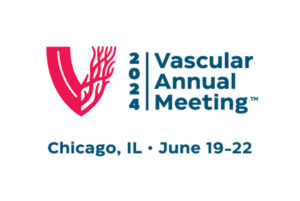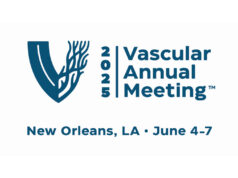 Five-year outcomes from the PRESERVE II study support the safety and effectiveness of the investigational Zenith iliac branch graft (ZBIS, Cook Medical) in combination with the iCast covered stent (Getinge) to preserve internal iliac artery perfusion during endovascular aneurysm repair (EVAR).
Five-year outcomes from the PRESERVE II study support the safety and effectiveness of the investigational Zenith iliac branch graft (ZBIS, Cook Medical) in combination with the iCast covered stent (Getinge) to preserve internal iliac artery perfusion during endovascular aneurysm repair (EVAR).
W. Anthony Lee, MD, is set to share this key conclusion during Plenary Session 8 (Saturday June 22, 11:15 a.m.–12:30 p.m., West Building, Level 3, Skyline Ballroom).
The PRESERVE II study evaluated the safety and effectiveness of the ZBIS graft with the iCast stent to maintain perfusion of the internal iliac artery during EVAR in patients with insufficient distal landing zone within the common iliac artery. This study was initiated after device integrity issues were observed using an investigational bridging stent in the PRESERVE I study.
This study was a prospective, multicenter, nonrandomized investigation conducted across 18 U.S. sites. Patients were enrolled between 2014 and 2015, with follow-up conducted out to five years.
Forty patients, the majority of whom (38) were male and with a mean age of 67.8 years, were treated. The study’s primary endpoint of sixmonth freedom from patency-related intervention was 100%, 30-day freedom from morbidity was 85%, and six-month branch vessel patency was 100%.
Lee, who is chief of vascular surgery at Boca Raton Regional Hospital in Boca Raton, Florida, will note at VAM 2024 that five-year follow-up was available in 75% of patients with complete imaging in 65%. He will present the findings that freedom from all-cause mortality at five years was 88.9%, there was no aneurysm-related mortality, and five-year freedom from patency-related intervention was 100%.
In addition, Lee will report that a total of nine patients required 15 secondary interventions, with six ipsilateral to the ZBIS, and that the treated iliac aneurysm size was decreased in 27% of patients and unchanged in 73%. There were no ruptures, type III endoleaks, migrations, or device integrity issues.












